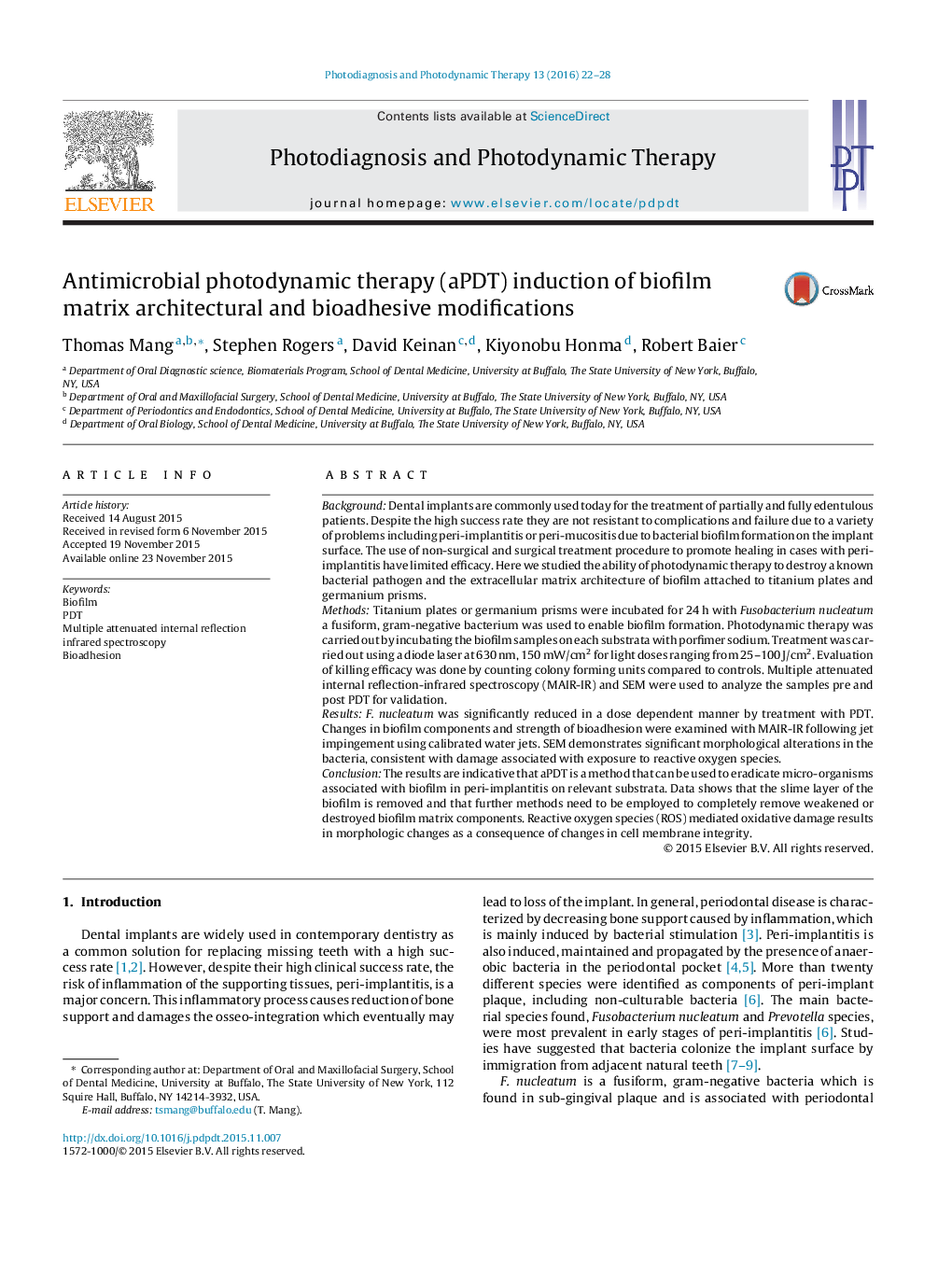| کد مقاله | کد نشریه | سال انتشار | مقاله انگلیسی | نسخه تمام متن |
|---|---|---|---|---|
| 3817625 | 1597729 | 2016 | 7 صفحه PDF | دانلود رایگان |

• aPDT is efficacious at killing gram-negative F. nucleatum in biofilm cultures.
• aPDT has detrimental effects on specific components of the extracellular matrix structure of F. nucleatum biofilms.
• aPDT has the potential to be used in a treatment regimen for peri-implantitis due to biofilm formation on titanium materials.
BackgroundDental implants are commonly used today for the treatment of partially and fully edentulous patients. Despite the high success rate they are not resistant to complications and failure due to a variety of problems including peri-implantitis or peri-mucositis due to bacterial biofilm formation on the implant surface. The use of non-surgical and surgical treatment procedure to promote healing in cases with peri-implantitis have limited efficacy. Here we studied the ability of photodynamic therapy to destroy a known bacterial pathogen and the extracellular matrix architecture of biofilm attached to titanium plates and germanium prisms.MethodsTitanium plates or germanium prisms were incubated for 24 h with Fusobacterium nucleatum a fusiform, gram-negative bacterium was used to enable biofilm formation. Photodynamic therapy was carried out by incubating the biofilm samples on each substrata with porfimer sodium. Treatment was carried out using a diode laser at 630 nm, 150 mW/cm2 for light doses ranging from 25–100 J/cm2. Evaluation of killing efficacy was done by counting colony forming units compared to controls. Multiple attenuated internal reflection-infrared spectroscopy (MAIR-IR) and SEM were used to analyze the samples pre and post PDT for validation.ResultsF. nucleatum was significantly reduced in a dose dependent manner by treatment with PDT. Changes in biofilm components and strength of bioadhesion were examined with MAIR-IR following jet impingement using calibrated water jets. SEM demonstrates significant morphological alterations in the bacteria, consistent with damage associated with exposure to reactive oxygen species.ConclusionThe results are indicative that aPDT is a method that can be used to eradicate micro-organisms associated with biofilm in peri-implantitis on relevant substrata. Data shows that the slime layer of the biofilm is removed and that further methods need to be employed to completely remove weakened or destroyed biofilm matrix components. Reactive oxygen species (ROS) mediated oxidative damage results in morphologic changes as a consequence of changes in cell membrane integrity.
Journal: Photodiagnosis and Photodynamic Therapy - Volume 13, March 2016, Pages 22–28